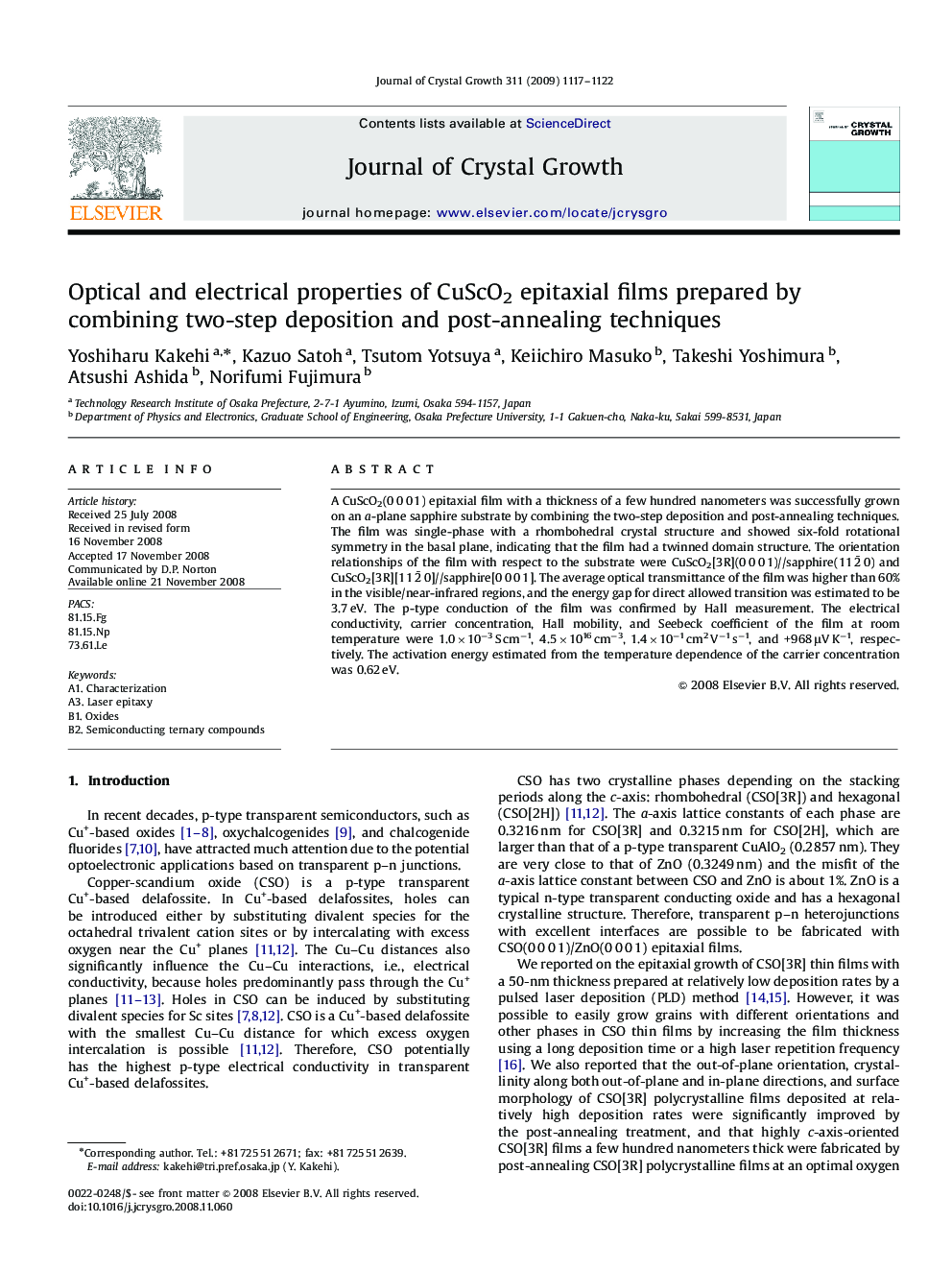| Article ID | Journal | Published Year | Pages | File Type |
|---|---|---|---|---|
| 1794589 | Journal of Crystal Growth | 2009 | 6 Pages |
Abstract
A CuScO2(0 0 0 1) epitaxial film with a thickness of a few hundred nanometers was successfully grown on an a-plane sapphire substrate by combining the two-step deposition and post-annealing techniques. The film was single-phase with a rhombohedral crystal structure and showed six-fold rotational symmetry in the basal plane, indicating that the film had a twinned domain structure. The orientation relationships of the film with respect to the substrate were CuScO2[3R](0 0 0 1)//sapphire(1 1 2¯ 0) and CuScO2[3R][1 1 2¯ 0]//sapphire[0 0 0 1]. The average optical transmittance of the film was higher than 60% in the visible/near-infrared regions, and the energy gap for direct allowed transition was estimated to be 3.7 eV. The p-type conduction of the film was confirmed by Hall measurement. The electrical conductivity, carrier concentration, Hall mobility, and Seebeck coefficient of the film at room temperature were 1.0Ã10â3 S cmâ1, 4.5Ã1016 cmâ3, 1.4Ã10â1 cm2 Vâ1 sâ1, and +968 μV Kâ1, respectively. The activation energy estimated from the temperature dependence of the carrier concentration was 0.62 eV.
Keywords
Related Topics
Physical Sciences and Engineering
Physics and Astronomy
Condensed Matter Physics
Authors
Yoshiharu Kakehi, Kazuo Satoh, Tsutom Yotsuya, Keiichiro Masuko, Takeshi Yoshimura, Atsushi Ashida, Norifumi Fujimura,
